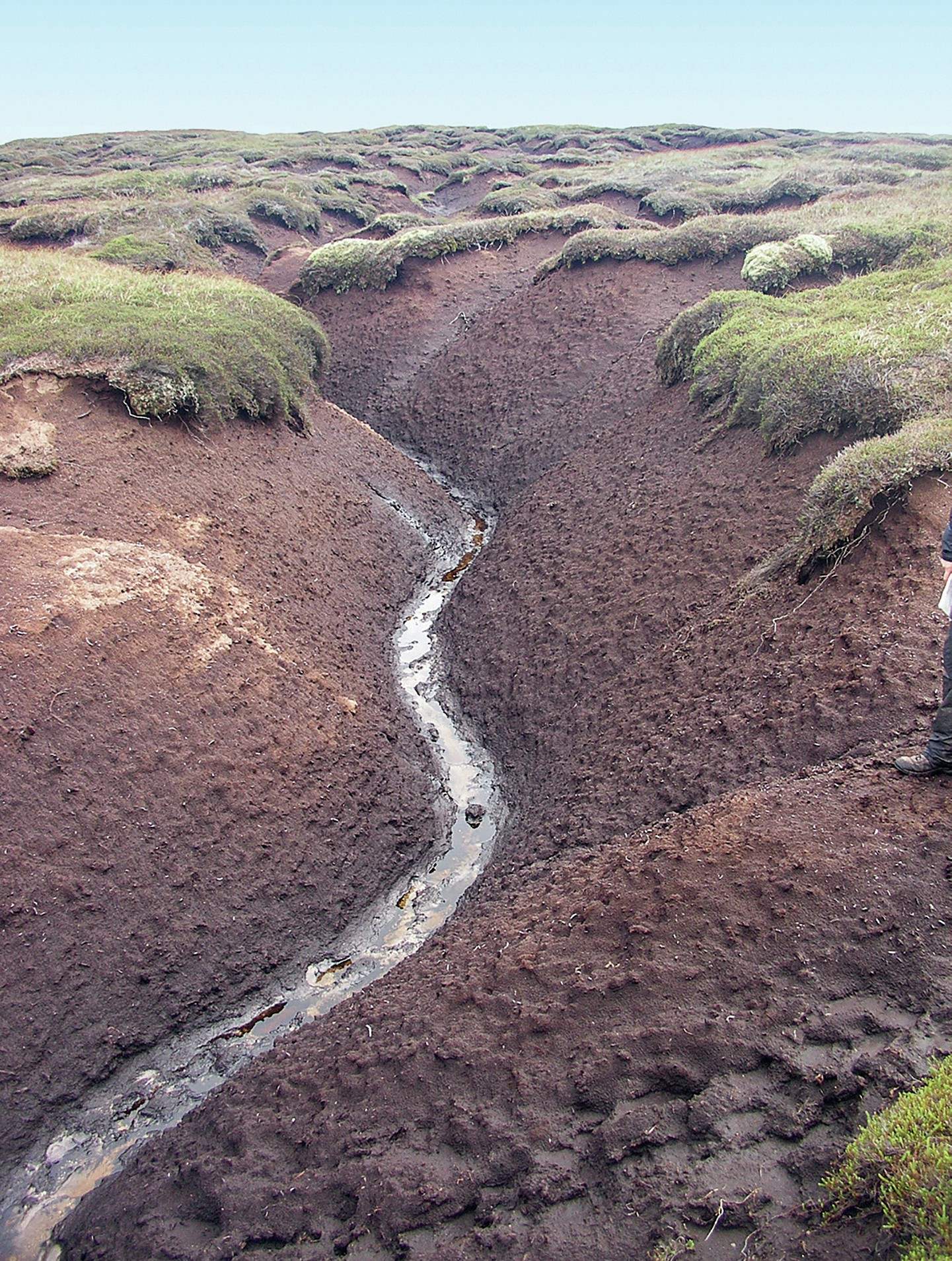
Peat is an accumulation of partly decomposed plant matter. It forms in waterlogged conditions where oxygen levels in the water are very low or absent (anaerobic conditions) and organic matter does not fully decay. Blanket peat deposits literally blanket the landscape on flat upland plateaus in the British Isles, where high rainfall and low temperatures produce year-round high water tables. The naturally acidic rainfall and organic acids from the peat help slow down the decay of organic matter even more.
As the peat develops, it holds water, a positive feedback that further encourages the peat to build up. The partly decomposed plant remains are slowly compressed as more material is added to the surface each year. Carbon dating shows that the peat has developed over the last 5,000 years and in some places can be several metres deep.
Your organisation does not have access to this article.
Sign up today to give your students the edge they need to achieve their best grades with subject expertise
Subscribe




